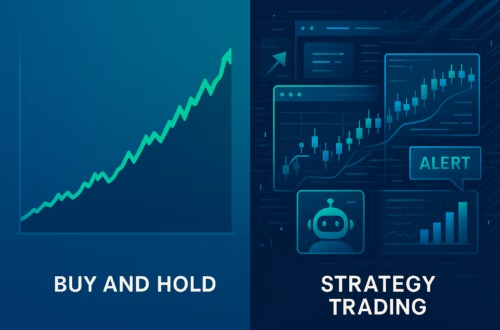Volume footprint charts are an innovative tool for traders looking to gain deeper insights into market dynamics. They allow for a granular view of trading activity, showcasing how volume is distributed across different price levels. This article will explore what volume footprint charts are, how to use them, their advantages, and some practical strategies for incorporating them into your trading routine.
What Are Volume Footprint Charts?
Volume footprint charts provide a detailed view of buying and selling volume at specific price levels over time. Unlike traditional candlestick charts, which display price movements, volume footprint charts visualize the volume associated with each price level, making it easier for traders to identify areas of interest.
When you look at a volume footprint chart, you will see two main components: the buying volume displayed on the right and the selling volume on the left. Each component is broken down into specific rows or boxes, showing how much volume occurred at each price level. This allows traders to assess the strength of buying versus selling pressure at a glance.
How to Access Volume Footprint Charts
To start using volume footprint charts, you need to select them within your trading platform. Most platforms, including TradingView, allow you to toggle between different chart types easily. Once selected, you can zoom in and out to view the data at varying time frames, from daily to minute charts.
When zoomed out, the chart provides a broader overview, while zooming in reveals more detailed data about the buying and selling activities. This flexibility is crucial for traders who want to see both the macro and micro perspectives of market movements.
Key Features of Volume Footprint Charts
Understanding the various features of volume footprint charts is essential for maximizing their utility. Here are some of the key components:
- Buying and Selling Volume: This is the core of the volume footprint chart, showing how much buying and selling occurred at specific price levels.
- Total Volume: The total volume for a specific candlestick is displayed, providing a comprehensive view of market activity.
- Delta: This metric indicates whether there is more buying or selling volume, helping traders gauge market sentiment.
- Row Size: The number of rows displayed can be adjusted automatically or manually, allowing for greater customization of the data view.
- Gradient Backgrounds: Volume footprint charts can apply color gradients to highlight areas of significant volume, making it easier to spot key levels.
- Point of Control: This indicates the price level with the highest trading volume, an important metric for identifying support and resistance levels.
- Value Area: This feature shows the range where a specified percentage (usually 70%) of the volume occurred, which is useful for determining potential price zones.
Benefits of Using Volume Footprint Charts
Incorporating volume footprint charts into your trading strategy offers several advantages:
- Enhanced Market Insight: By visualizing volume distribution, traders can better understand the forces driving price movements.
- Identifying Support and Resistance: The point of control and value area help traders identify critical support and resistance zones based on actual trading activity.
- Improved Decision-Making: With real-time data on buying and selling pressure, traders can make more informed decisions and adjust strategies accordingly.
- Detection of Imbalances: Volume footprint charts highlight imbalances between buying and selling, which can signal potential trend reversals or continuations.
How to Analyze Volume Footprint Charts
Analyzing volume footprint charts requires a systematic approach. Here are some steps to effectively interpret the data:
- Observe the Volume Distribution: Look at the buying and selling volumes to assess which side is more dominant.
- Check the Delta: A positive delta indicates strong buying pressure, while a negative delta suggests selling pressure. This can help you gauge overall market sentiment.
- Identify Key Levels: Use the point of control and value area to mark potential support and resistance levels.
- Watch for Imbalances: Significant differences in buying versus selling volume can indicate potential price movements.
- Customize Your View: Adjust row sizes, colors, and settings to best suit your trading style and preferences.
Practical Strategies for Using Volume Footprint Charts
Here are some practical strategies that can help you leverage volume footprint charts effectively:
1. Trend Confirmation
Use volume footprint charts to confirm existing trends. If you see increasing buying volume during an uptrend, it reinforces the strength of that trend. Conversely, increasing selling volume during a downtrend can signal continued bearish sentiment.
2. Spotting Reversals
Look for areas where buying and selling volumes are significantly imbalanced. For example, if selling volume dramatically outweighs buying volume at a support level, it could indicate a potential reversal or breakdown.
3. Setting Entry and Exit Points
Utilize the point of control and value area to set entry and exit points. Enter trades when the price approaches these levels, and consider exiting when price moves away from them.
4. Combining with Other Indicators
Integrate volume footprint charts with other technical indicators, such as moving averages or RSI, to enhance your analysis and confirm signals.
Conclusion
Volume footprint charts are a powerful tool for traders looking to gain a competitive edge in the market. By visualizing buying and selling volume at specific price levels, they provide insights that can significantly improve trading decisions. Whether you’re a seasoned trader or just getting started, mastering volume footprint charts can enhance your market analysis and trading strategies.
To optimize your investments with automated trading solutions, consider exploring PickMyTrade’s automated trading solutions. For more trading ideas and unique market insights, check out Trader scheplick — Trading Ideas & Charts — TradingView and TradingView — Track All Markets. Stay connected with the trading community on Twitter and Facebook.
PickMyTrade
PickMyTrade specializes in automating trading bots, enabling seamless strategy execution for futures from platforms like TradingView, across well-known brokers such as Tradovate.



